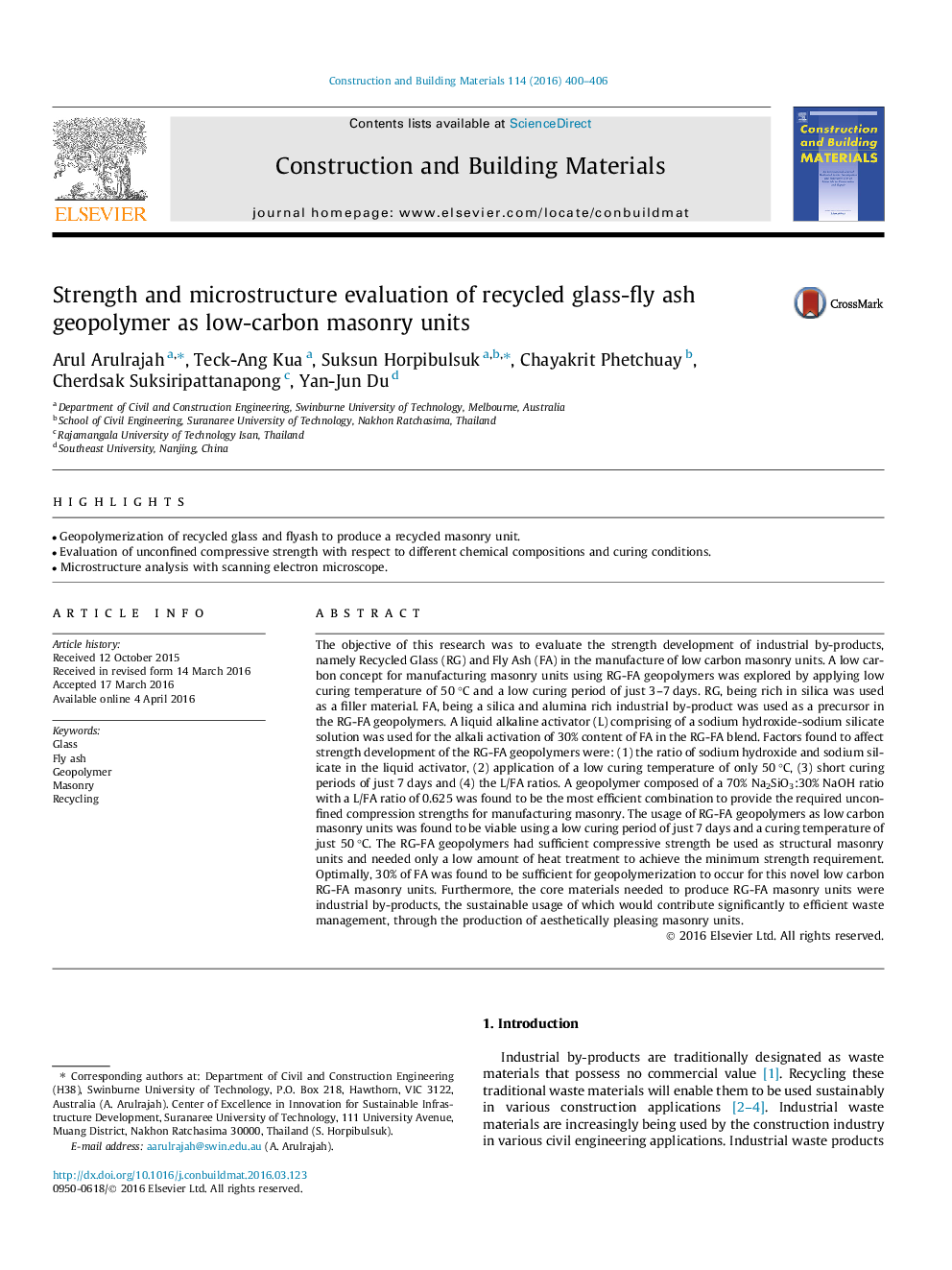| Article ID | Journal | Published Year | Pages | File Type |
|---|---|---|---|---|
| 255995 | Construction and Building Materials | 2016 | 7 Pages |
•Geopolymerization of recycled glass and flyash to produce a recycled masonry unit.•Evaluation of unconfined compressive strength with respect to different chemical compositions and curing conditions.•Microstructure analysis with scanning electron microscope.
The objective of this research was to evaluate the strength development of industrial by-products, namely Recycled Glass (RG) and Fly Ash (FA) in the manufacture of low carbon masonry units. A low carbon concept for manufacturing masonry units using RG-FA geopolymers was explored by applying low curing temperature of 50 °C and a low curing period of just 3–7 days. RG, being rich in silica was used as a filler material. FA, being a silica and alumina rich industrial by-product was used as a precursor in the RG-FA geopolymers. A liquid alkaline activator (L) comprising of a sodium hydroxide-sodium silicate solution was used for the alkali activation of 30% content of FA in the RG-FA blend. Factors found to affect strength development of the RG-FA geopolymers were: (1) the ratio of sodium hydroxide and sodium silicate in the liquid activator, (2) application of a low curing temperature of only 50 °C, (3) short curing periods of just 7 days and (4) the L/FA ratios. A geopolymer composed of a 70% Na2SiO3:30% NaOH ratio with a L/FA ratio of 0.625 was found to be the most efficient combination to provide the required unconfined compression strengths for manufacturing masonry. The usage of RG-FA geopolymers as low carbon masonry units was found to be viable using a low curing period of just 7 days and a curing temperature of just 50 °C. The RG-FA geopolymers had sufficient compressive strength be used as structural masonry units and needed only a low amount of heat treatment to achieve the minimum strength requirement. Optimally, 30% of FA was found to be sufficient for geopolymerization to occur for this novel low carbon RG-FA masonry units. Furthermore, the core materials needed to produce RG-FA masonry units were industrial by-products, the sustainable usage of which would contribute significantly to efficient waste management, through the production of aesthetically pleasing masonry units.
